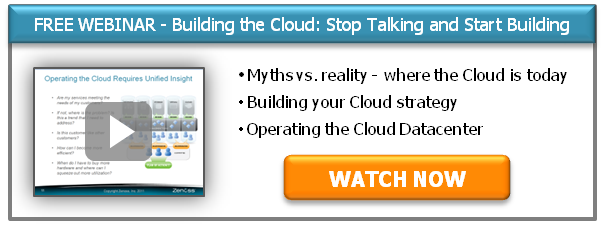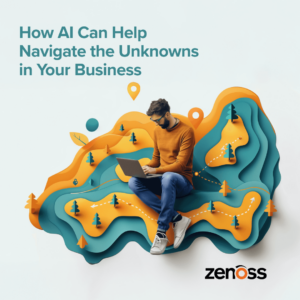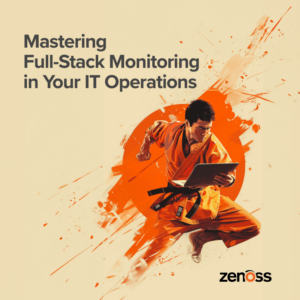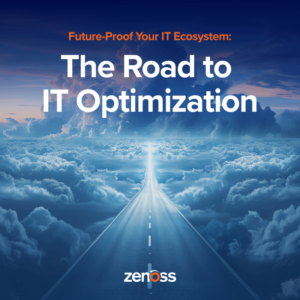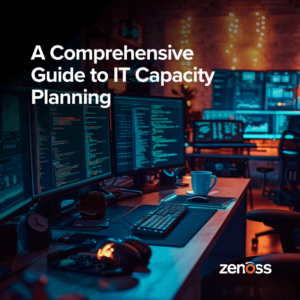
- Understanding Business Goals & Objectives - Before moving to the Cloud, IT must “step-back” to understand both the short-term and long-term goals and objectives of their Enterprise. Rather than reviewing projects through their “technology glasses”, this exercise must be conducted from purely a business point-of-view. Ideally, IT would always have this purview, but the reality is most IT organizations have a tough enough time keeping things running let alone being aligned to business objectives. After all, you many not want to start a massive restructuring of your IT organization and a move to the Cloud right before a major acquisition.
- Industry and Competitive Assessment - As the old saying goes, “Misery loves company.” Chances are that others in your Industry are grappling with similar issues as your Enterprise. It is important to understand what the thought-leaders in your Industry are doing via their own organizations or Industry groups. Additionally, examine your competitors for golden nuggets of wisdom regarding their Cloud strategy. This may give Enterprises the push they need to turn IT into a weapon by using the Cloud to provide more agile and Business aligned services.
- Grade Your Enterprise - It is time for an honest assessment of the type of Enterprise you are trying to transform. Some organizations are more willing to change while others are “hanging-on” to the legacy ways of the past. Here are some Sample Grades:
- Legacy – Dependent on legacy providers such as SAP, Oracle, IBM, etc.
- Consultant Driven – Dependent on 3rd Party Consultants for Industry Information
- Agile/Flexible – Your Enterprise is willing to try new ideas
- Grade Your People - It is time for an honest assessment of the type of people working for your Enterprise. This includes looking at everyone from Executives, Staff, Maintenance, IT, and more. Only by understanding your Employees, will you be able to verify the Grade you gave your Enterprise as a whole. For example, is everyone still carrying Motorola Razor phones? Or are smartphones and tablets all the rage? Do you Skype or use Copper? Do you use Remember The Milk, or sticky notes? Remember that Cloud isn’t just about technology; it’s about people too.
- Application Categorization and Usage - Take a hard look at the applications and services IT is providing to the Enterprise as a whole. Don’t just look at services such as Email or Voicemail, instead look at virtually every aspect of the relationship between IT and the rest of the company. What applications does IT provide? How are they used? What services aren’t being used? Why? What applications are the employees using to bypass IT? Dropbox? Cl1p.net? Mozy? Remember, don’t judge IT our your users, simply gather the information.
- IT Organizational Assessment - Now it’s time to take a look at your IT organization structure. Start from the Top to the Bottom and examine where in the politically hierarchy does IT reside. Examine the reporting structure of the entire IT organization and review if there are any disciplines that are not within IT’s influence and control. Is your IT organization silo’d? Do you have a central NOC? Do people share information? Do networking, security, server, virtualization, storage, and more share common goals? How does IT work with other parts of the company such as development?
- Grade Your IT Infrastructure - Before moving any further, it is time to review the current state of your IT infrastructure. Review everything from the applications to the physical hardware. Look at legacy mainframes, hypervisors, operating systems, storage devices, security, and more. Don’t forget to include shelfware or “free” products that you may have available to your Enterprise. What’s under maintenance? What’s going EOL? What’s performing well? What’s outsourced? This may be the most time consuming task on this list, but it’s very important ton understand what you have before assessing what you need.
- IT Gap Strategy - Armed with the information of where your business is going, what services IT provides, what services your users rely on, and what services your users go around IT for, it is time to review your Gaps and formulate a comprehensive Gap strategy. For example, if you are running out of datacenter capacity then should you build or look to the Cloud? If your users are utilizing an unauthorized application or service then should you provide it to them? If the business is moving in a new direction, then do you have the resources to spin up services to support this effort? Perhaps the most important part of this section is honesty.
- Cloud Assessment - Now that you have a gap assessment; its time to explore how to close the gaps and make IT more agile and proactive. Take a hard look at what services you are currently providing that may make sense to move to the Cloud. These may include IT tools such as a service desk or management as well as corporate tools such as accounting and finance. If appropriate, then include both development and testing in this process. Also, leave no service unturned including websites, partners, and customer portals. At this stage, it’s important to understand what services are suited for the Cloud based on your company’s culture and readiness as well as what services need to be hosted internally. There are no wrong answers here as it’s simply an assessment of where you are and where you want to go based on what’s available today.
- Doomsday Cloud Scenario Exercise - Finally, it’s time to consider the Cloud doomsday scenario. Think of this as a war game exercise for your Enterprises or as a wide spread disaster recovery exercise. What would happen if you moved critical and non-critical services to the Cloud and the Cloud went down? Think beyond restoring the services themselves as strategies may be put in place to mitigate outages. Would this scenario put your Cloud strategy at risk? Would the CEO demand that IT move back to a traditional model? How would the employees react? What would happen in the case of a security breach? Would the reactions be different?
Armed with this information, your Enterprise may begin the process of moving toward a Cloud infrastructure. It is important that the entire Enterprise understand the changes that are coming and are willing to participate in turning IT into a proactive business weapon for your Enterprise.

